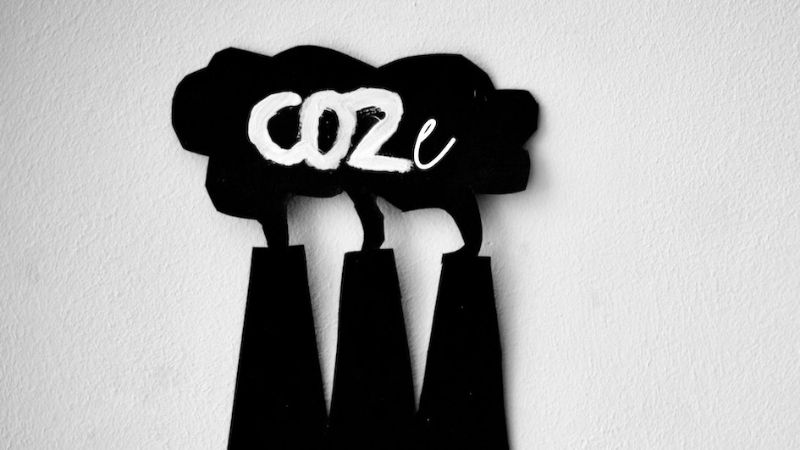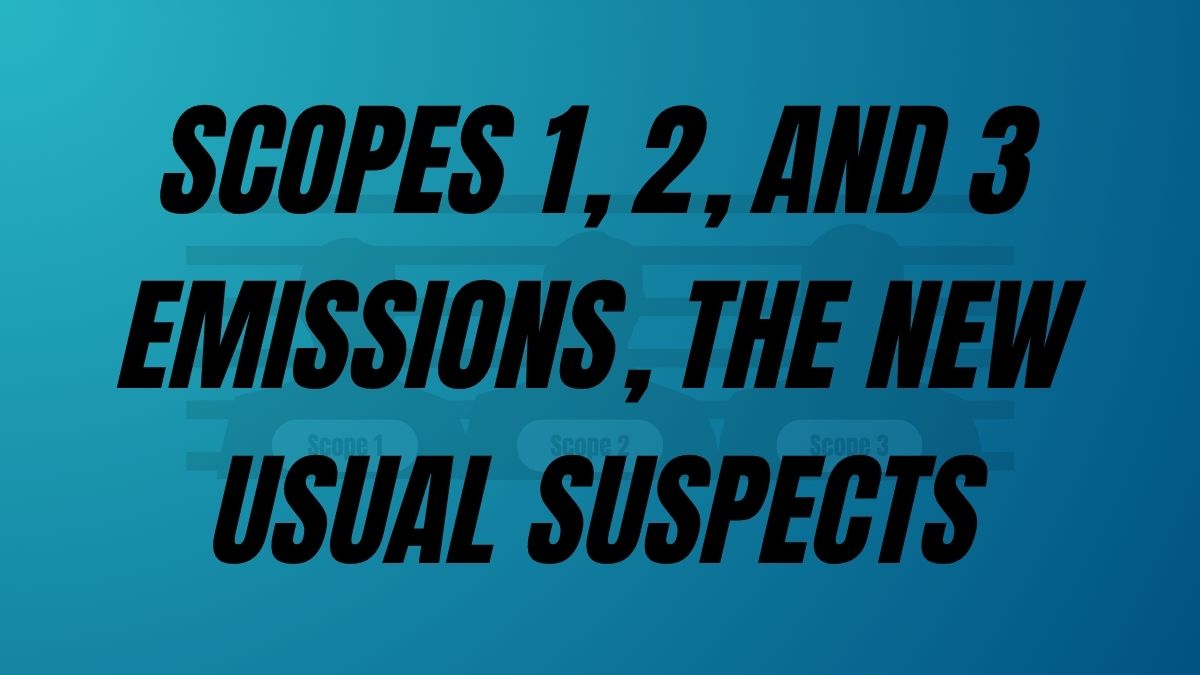One key concept to remember in all discussions is CO2e, or carbon dioxide equivalent. Are you confident in your understanding of greenhouse gases, CO2e, and its calculation? This article will explain why this indicator is vital for the planet’s future, whether you work in a large company or an SME.
Understanding The Vital Role of Greenhouse Gases for the Planet
What is the role of the greenhouse effect for the planet?
Before discussing greenhouse gases and their role, let’s recall what the Earth’s atmosphere is and its purpose. The atmosphere is a gaseous envelope surrounding the Earth, with most gases held in place by gravity.
- On one hand, the atmosphere helps maintain the heat naturally emitted by the planet. Without this protection, the average temperature would be around -20°C.
- On the other hand, it protects the Earth from the sun’s rays, particularly UV radiation. This greenhouse effect makes our planet habitable, despite significant climatic disparities.
This layer is about 800 km thick and is composed of a mixture of a number of gases. This gaseous layer plays a protective role on two levels.
Good vs Bad Greenhouse Gases: How to Decode Their Impact on the Environment?
Among the good greenhouse gases (GHGs), ozone ranks foremost as it protects us from the ultraviolet rays (UVB) emitted by the sun. However, certain GHGs have a negative and direct impact on climate change:
- Carbon dioxide (CO2) – excessive amounts contribute to global warming
- Methane (CH4) – emitted by cows, transportation, and combustion of fossil fuels like coal, natural gas, and oil
- Nitrous oxide (N2O) – also known as “laughing gas”
- F-gases – a group of synthetic gases
Disrupting the balance between these atmospheric gases leads to global warming, which has long-lasting effects on climate. In the 1970s, the impact of CFCs on the ozone layer was demonstrated. These CFCs, massively emitted by aerosols from the 1950s to the 1980s, created a significant imbalance in the atmosphere above the South Pole that continues to expand. This degradation leaves the Earth less protected from UVB in affected areas.
To properly analyze each GHG’s role, we must consider its Global Warming Potential (GWP). GWP measures the extent of warming caused by a gas over a given period, typically 100 years. This metric allows us to compare the impacts of different GHGs.
The most concerning consequence is the rise in ocean temperatures, which manifests in various ways, including a significant increase in sea levels, posing a threat to many coastal cities.
CO2 vs CO2e : Clarify the difference and the ecological impact
Carbon dioxide, the well-known CO2, is a gas that naturally occurs in very small amounts in the atmosphere. Contrary to popular belief, carbonic gas, another name for CO2, is absolutely essential for two reasons:
- On one hand, plants need CO2 which they convert into oxygen (O2) and carbon for their own growth; this is photosynthesis.
- On the other hand, carbon dioxide acts as a filter for the infrared rays emitted by the sun, releasing energy in the form of heat into the atmosphere (remember that the temperature would be around -18°C without the Earth’s atmosphere).

CO2e, for its part, is an index that allows for the assessment of the impact of anthropogenic activity, in other words, human activity, through all the greenhouse gases emitted into the atmosphere.
CO2e Explained: Importance and Calculation Methods
Eurostat defines carbon dioxide equivalent (CO2e) as a metric to compare various greenhouse gas (GHG) emissions. It measures emissions based on their global warming potential (GWP). This metric converts the amounts of different gases emitted into the equivalent amount of carbon dioxide with the same GWP.
In simpler terms, CO2e represents the mass of carbon dioxide that matches the global warming potential of a specific greenhouse gas. Thus, it provides a method to measure greenhouse gas emissions while considering each gas’s warming power relative to CO2 (Chiffres clés du CO2).
At the initiative of the IPCC, the ton of CO2e becomes the unit of measurement for all human activity and its impact on global warming.
Methane’s impact converts by evaluating the amount of CO2 that the quantity of methane emitted by an activity like cattle farming in a country or region would represent. Eurostat produces CO2 equivalences for each human activity emitting greenhouse gases.
The measurement of CO2e becomes the gold standard of anthropogenic activity, that is, the activity created by man and its impact on the planet. It must still be kept in mind that nearly a quarter of CO2 emissions are absorbed by the oceans (The Conversation).
We have all already seen images of the Great Barrier Reef in Australia which is undergoing petrification; this image is spectacular but it is not the only consequence of the absorption by seawater of these significant amounts of CO2. Indeed, seawater that absorbs carbon dioxide becomes more acidic and this impacts the entire marine food chain.
Plankton, the base of the food for many species, undergoes a change in its metabolism and reproduces less well. The food resource decreases for its predators and for the rest of the chain. Fisheries resources are also declining, impacting the food supply for a large part of humanity.
The decrease in plankton reproduction reduces the amount of oxygen released into the environment. In the long term, this will have an impact on the quality of the air we breathe on Earth.

Calculating CO2e: What Does It Mean for Ecology?
Carbon dioxide equivalents (or carbon dioxide) are generally expressed in tons of carbon dioxide equivalents, but they are often also seen in kg or even g. To quantify the CO2 equivalent, one must multiply the amount of greenhouse gas by their GWP.
We must also consider the “residence” duration of each greenhouse gas (GHG) in the atmosphere. Some gases remain for shorter periods than others. Therefore, experts calculate a global warming potential (GWP) over a 100-year timeframe.
The GWP is an index, with CO2 having a value of 1, while the GWP of all other greenhouse gases corresponds to the number of times they cause warming greater than that of CO2. Thus, 1 kg of methane causes warming 25 times greater over 100 years than 1 kg of CO2, which is why the GWP of methane is 25.
The Global Warming Potential (GWP) of CO2 serves as the Greenwich Meridian by which we evaluate all actions related to global warming.
The Crucial Importance of CO2e in the Fight Against Climate Change
Thinking in terms of CO2e allows us to compare the harmful effects of greenhouse gases. These gases vary significantly due to their “lifespan” in the atmosphere. Without this standardization, comparing them would be like comparing apples and oranges. This methodology helps us standardize impacts, even if the actual amounts emitted differ greatly.
Let’s use an analogy. Think back to the 80s or 90s. Many of us kept small change from family trips abroad without knowing its value in our national currency.
As children, we wanted to know our “relative wealth.” We considered the exchange rate but didn’t want to convert our travel memories into cash.
How much did 3,000 Italian lire, 200 pesetas, 3 British pounds, and 7 Deutsch Marks represent in francs? Measuring each GHG’s impact in CO2e is similar. We can convert emissions into a single unit of measurement, like CO2e, using various analogies, such as round-trip flights from Paris to New York or burgers.
This approach increases transparency. It allows us to compare the impact of human actions within a country or even between countries. The use of decarbonized energy significantly influences CO2e emissions calculations.

In conclusion
Understanding CO2e is crucial for assessing and mitigating human impact on the climate. This indicator measures the cumulative impact of all greenhouse gases. It helps us grasp the urgency of the climate crisis and the need to reduce emissions.
Whether through public policies, corporate initiatives, or individual actions, recognizing CO2e is essential for preserving our planet for future generations. By understanding the role and impact of each greenhouse gas, we can work towards a more environmentally respectful society.
FAQs About Greenhouse Gases
What is the greenhouse effect, and why is it important?
The greenhouse effect is a natural process where certain gases in Earth’s atmosphere trap heat, maintaining the planet’s temperature at a habitable level. Without this effect, Earth’s average temperature would be around -18°C, making it uninhabitable.
What is CO₂e, and why is it important?
CO₂e, or carbon dioxide equivalent, is a metric that expresses the impact of different GHGs in terms of the amount of CO₂ that would have the same global warming potential (GWP). This standardization allows for the comparison and aggregation of the effects of various gases.
How does the imbalance of greenhouse gases lead to global warming?
An excess of GHGs intensifies the greenhouse effect, trapping more heat and raising Earth’s average temperature. This warming disrupts climate patterns, leading to extreme weather events, sea-level rise, and ecological imbalances.
To find out more about Corporate Sustainability




> Discover the other blog pages
📉 How to Reduce Your Digital Carbon Footprint in B2B SaaS
💪 Overcoming B2B SaaS Challenges: Customer, GTM & Marketing
📈 How Mastering SEO Can Lead To Sustainable Growth In B2B SaaS
⏱️ How to Boost Work Productivity with Time Management Tips
☝ How I wrote this post
As Head of Marketing at Easygreen, I am involved in the development of solutions aimed at reducing the digital carbon footprint of companies. We start by eliminating shared attachments in emails. Emails are a major although invisible problem given the considerable amount of emails sent every day around the world.
I wrote this post based on research on Google to identify the most popular queries and to identify the sources I cite.

